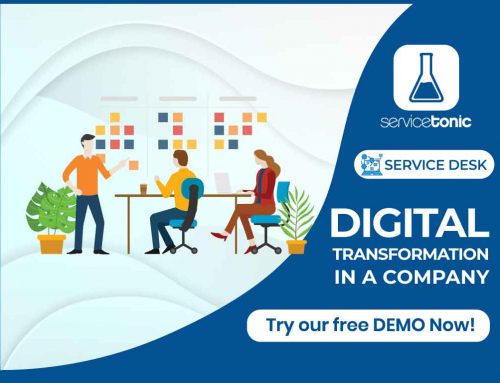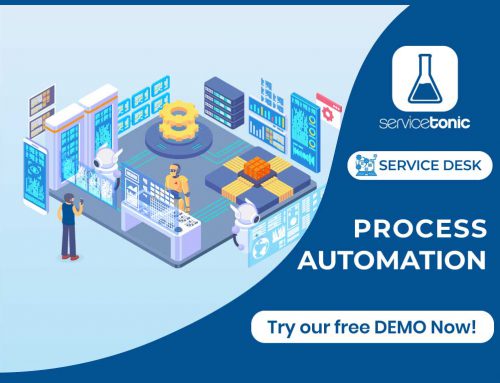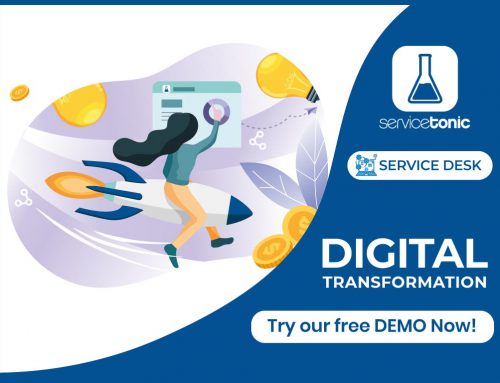Table of Contents
Enable better and faster decision making
When we learn something of value, we want to transform it into useful knowledge, and for this, we need to retain that learning and share it. Organizations tend to benefit a lot when their people start sharing, innovating, reusing, collaborating on what they learn.
This is what the Knowledge Base does.
What is the Knowledge Base (KB)
The Knowledge Base (KB), or Knowledge database, helps us save, organize and share knowledge, through a database.
In a company, the experts and employees’ knowledge can help increase the satisfaction of the customers. These experts and employees know them firsthand and know the business processes from the inside.
We need to manage our business knowledge because it is very valuable for the future of the company, just as reuse of materials is good for the environment, reusing information reduces rework and minimizes time to deliver support
What is Knowledge Management
But Knowledge Management is not only storing data.
Knowledge Management consists of collecting learnings, organizing them and making them accessible so they can be easily retrieved and used.
This way, we make the knowledge useful.
How to manage the knowledge to give value to our company?
Keys to managing and leveraging knowledge
1. Involve and educate employees
Everyone in the company needs to be involved in knowledge management.
Employees add value to the knowledge database, they accumulate learning from the day to day in the service and the contact with the customer.
When knowledge is poorly managed, it is common to see how employees always going to the same person to get answers. This makes the team/organization people dependent. This is a burden that can lead to frustration and unproductivity. When we start to manage knowledge right, it is necessary to correct those dynamics.
In order to do this, the benefits of employee-involvement need to be communicated. For example, without having to rely on a person, they can access verified and updated information instantly. In addition, when agents register a new response when detecting an internal or customer need, they contribute to the continuous improvement of the service.
To lead this process, choose a person responsible for knowledge management who does this training and defines various levels of access to information according to the role of user. He is your organizations knowledge management champion.
2. Use the right means
A Service Desk like ServiceTonic optimizes knowledge management. Among other features, it allows:
- Access the KB from a ticket and attach the link to the solution with a click.
- Save new solutions easily.
- Enable a web portal for self-service and access to knowledge articles
- Identify recurring incidents that have a predefined solution.
The benefits of using a Service Desk are speeding up the acquisition of solutions, easily managing new knowledge generated in incident resolution, and improving response quality by providing predefined verified solutions.
3. Update the knowledge
The knowledge we share may become obsolete. That is why it is necessary to constantly review and update Knowledge Database information: FAQ and How-to articles, White papers, tutorials, wikis, etc.
In the same way that new content needs to be uploaded, it is important to review the one that is already saved, to avoid redundancies, duplications or outdated information.
Focus on the customer
The goal of knowledge management is to provide solutions to the customer
Knowledge management not only tries to give answers, but also to make them easily accessible and useful for those who need information.
To make them easily accessible, we can use a self-service web portal, a 24h available channel that provides information without having to contact an agent or wait for their availability.
To make them useful, we need to evaluate whether our system is useful to the user. Add a scale to rate the usability of each article or two buttons to show like or dislike at the end of it.
4. Knowledge management 2.0
The latest trends in knowledge management focus on acting before a problem arises.
We need to be proactive to prevent the lack of knowledge of our employees and customers.
It is about identifying where there is a lack of knowledge, and which is the necessary information to provide before they have a doubt or incidence. For example, we can communicate this information through Newsletters or the FAQ section of our website.
5. The value of information
By correctly managing the knowledge of our company, we will:
- We improve the customer experience and increase customer loyalty. They find the answers they need at all times, without having to wait or expose their situation to an agent.
- Reduce costs by reducing the number of incidents. With self-service, we avoid having to use the time of an agent to solve an incident.
- Accelerate incident resolution. When the user contacts an agent, the agent can access the KB from a ticket, which facilitates a quick and easy solution. In addition, agents can store new predefined responses to recurring incidents.
- Increase support agent confidence. When your agents have all the right answers at their fingertips, they feel more confident while providing support. This increases agent job satisfaction, an important KPI in most organizations
Get to know the ServiceTonic knowledge database and start managing the knowledge that is generated every day in your company.




